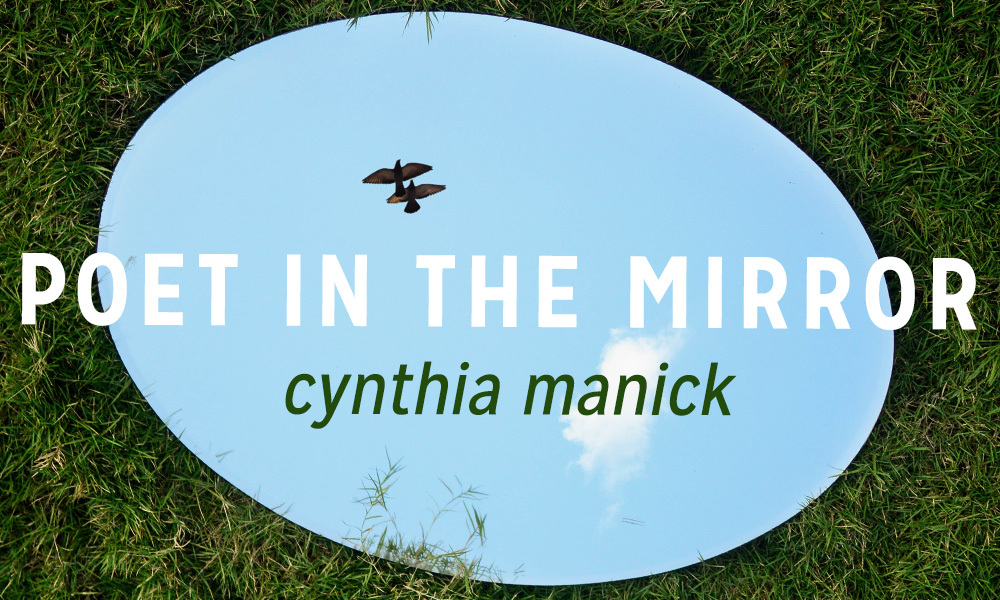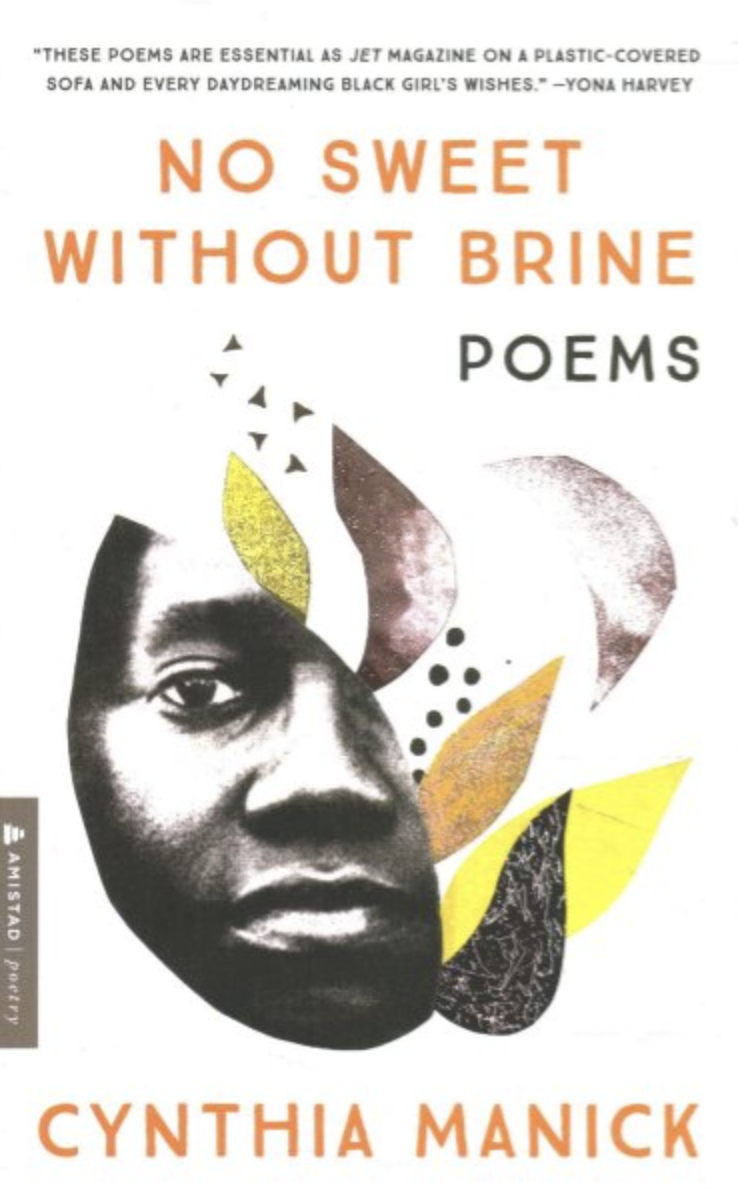Poet in the Mirror: Cynthia Manick

We’re so proud to share some insight into the lives and hearts of today’s poets with our Poet In The Mirror series. This month, Cynthia Manick—author of No Sweet Without Brine (available now from Amistad) and former Frontier contributor—shares insight into self-portraits, writing pop culture, and literary community.
On Writing Different Selves
First, congrats on No Sweet Without Brine! I could not put this book down–it’s glorious. Something I’m always interested in is repeating poems in collections. Could you talk a bit about the impulse behind the numbered self portraits in this book?
I’m so glad you like the collection! And I’m loving the word glorious – can we make that word a go-to adjective?
Repeating poems or themes fascinate me also because as poets we explore our obsessions and they become what we orbit. When I was writing the self-portraits, I was thinking about how we all have different selves – sister, friend, daughter, artist, coworker, etc. that we present to the world. In a day, month, or year we vacillate between selves, roles, and moods in no particular order. And since we self-reflect on those roles at random, numbering the self-portraits sequentially didn’t feel right. I also didn’t write them in sequential order either, so there is a possibility of more numbered self-portraits in the future.
On Pop Culture
This book contains quite a few poems that engage with pop cultural references directly–I’d love to hear your thoughts both on the process of writing these and the role you see them playing in the collection.
I engage pop culture in terms of memory and consider it a Sweet part of No Sweet Without Brine. I’m a child of late 80’s and 90’s pop culture, where after school TV was a necessity and Saturday mornings was Lucky Charms or Frosted Flakes and nonstop cartoons.
I think pop culture is linked to how we access moments in time, and they serve as touchstones. If a reader has ever watched the Facts of Life, when I mention Tootie, they’re immediately drawn into their own experience of seeing her on those skates. The poem then engages on a poetic level, the pop culture level, and then the experience level. In addition, Soul Train and JET magazine are major iconic artifacts of Black culture and history, so I can’t think of memory without them.
On Sectioning
No Sweet Without Brine is divided into four titled sections. How did you arrive at this structure and how do you see it informing the reading of the book?
Early on I knew I wanted the book to have four sections because it reminded me of the four directions – north, south, east, and west and how we change directions with each choice we make and each experience we have. I also think the traditional 3-part sections of beginning, middle, and end doesn’t work for my poetry. The sections of No Sweet Without Brine explore how identity is created. You have self-portraits, types of love, family, and Black culture and each section has parts of those elements.
I also think of the poems and sections like a playlist, so one section and emotion builds on the one before it. My favorite poetry books are the ones the leave you full after you’ve read the last poem – like the book was a four-course meal. I want NSWB to have that feeling.
On Claiming “Poet”
When did writing become a professional endeavor for you? How did that begin?
It took awhile for me to call myself a poet. After my MFA from the New School in 2007 – I had workshops and fellowships with the Cave Canem Foundation, Callaloo Writing Workshop, and Poets House. The teachers and peers I met there really helped me find the voice of my “I”. In 2013 I created the reading series Soul Sister Revue (which just ended last week after a 10-year run) and then my first collection Blue Hallelujahs was published in 2016. By then I was a professional poet and curator and to my surprise a storyteller.
On Literary Community
What is a popular craft advice that you don’t practice yourself?
Oh, people always say writing is a muscle and you should write everyday but that’s really just not for me. Every time I attempt to participate in 30/30 (30 poems in 30 days for National Poetry Month in April) – I never make it. When I have to write every day, it becomes a chore, and that’s not what I want poetry to ever be.
However, I do think you should engage in the literary world as much as you can because that will feed your writing and keep you connected to the literary community. Read something literary or nonliterary every day (from poetry to romance novels) to see what connections words can spark. Also attend literary readings, even if it’s on Zoom and you’re camera off in pajamas eating ice cream. That engagement will teach you about breath and allow you to see how words can be performed.
On Creativity
What do you do to re-energize your creativity?
I think re-energize can look different to different people. I like listening to a great song or playlist and vegging out on the couch while watching something funny. I’m also into this Idris Elba coloring book a friend got me! I will say that when I’m reading a poetry book (yes, I like the feel of paper in my hands), I always put a piece of scrap paper in the back. If I get inspired by something when I’m reading, I’ll write it down. It can be a word because I like the way it sounds, it can be a poem’s shape, or sometimes an image sparks an image of my own. At the end of reading the book, I take all my scrap notes and put them in a mini notebook. I have 5 or 6 mini-notebooks of words and images that I go to when writing something new.

Winner of the Lascaux Prize in Collected Poetry, Cynthia Manick is the author of No Sweet Without Brine (Amistad-HarperCollins, 2023), editor of The Future of Black: Afrofuturism, Black Comics, and Superhero Poetry, and author of Blue Hallelujahs. She has received fellowships from Cave Canem, Hedgebrook, MacDowell, and Château de la Napoule. A storyteller at literary festivals, libraries, universities, and most recently the Brooklyn, Frye, and Rubin museum’s, Manick’s work has been featured in the Academy of American Poets Poem-A-Day Series, Brooklyn Rail, the Rumpus, and other outlets. She lives in Brooklyn, New York but travels widely for poetry.